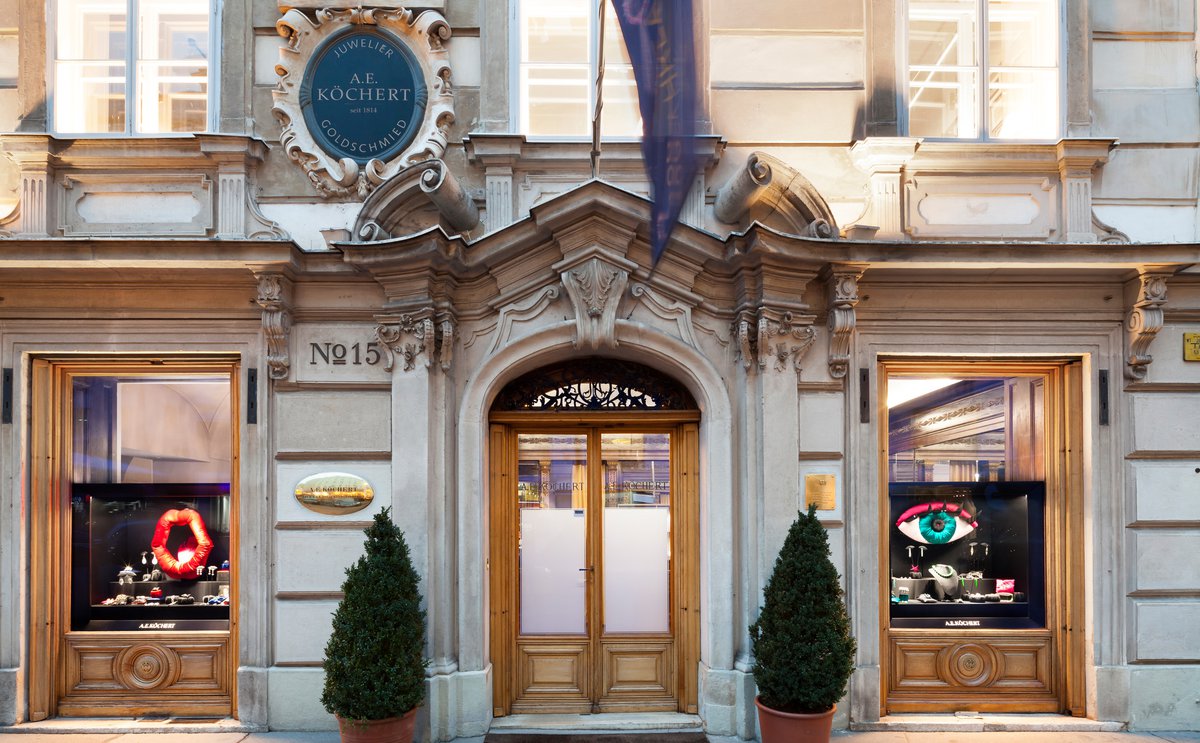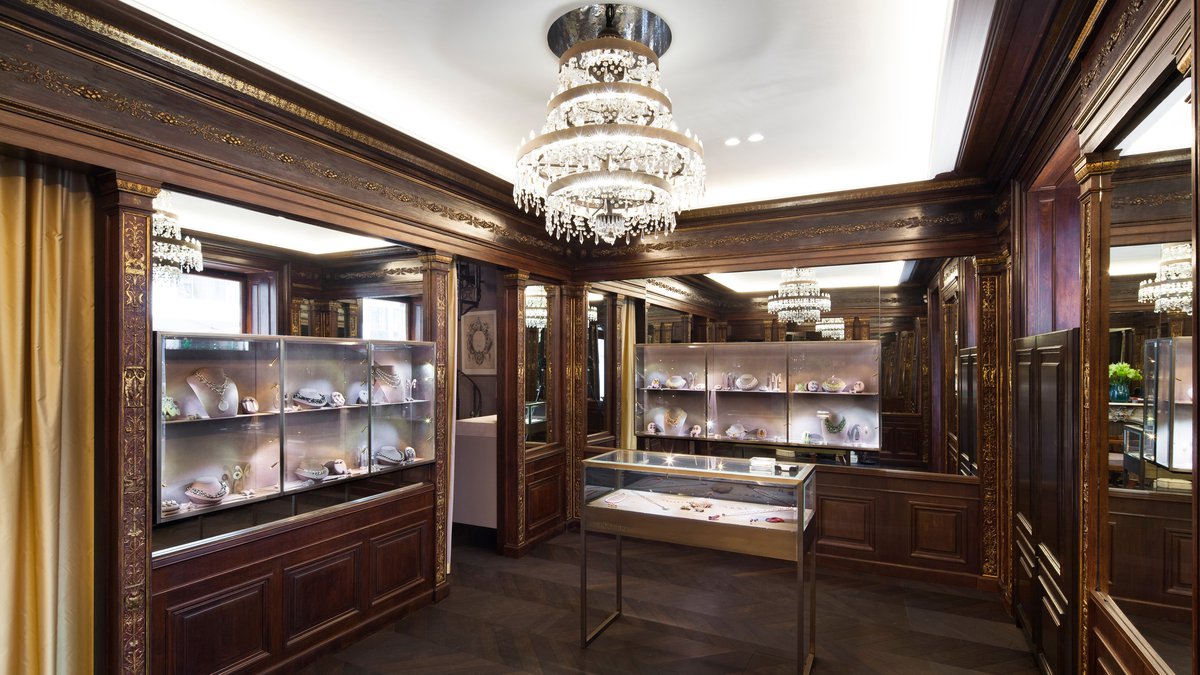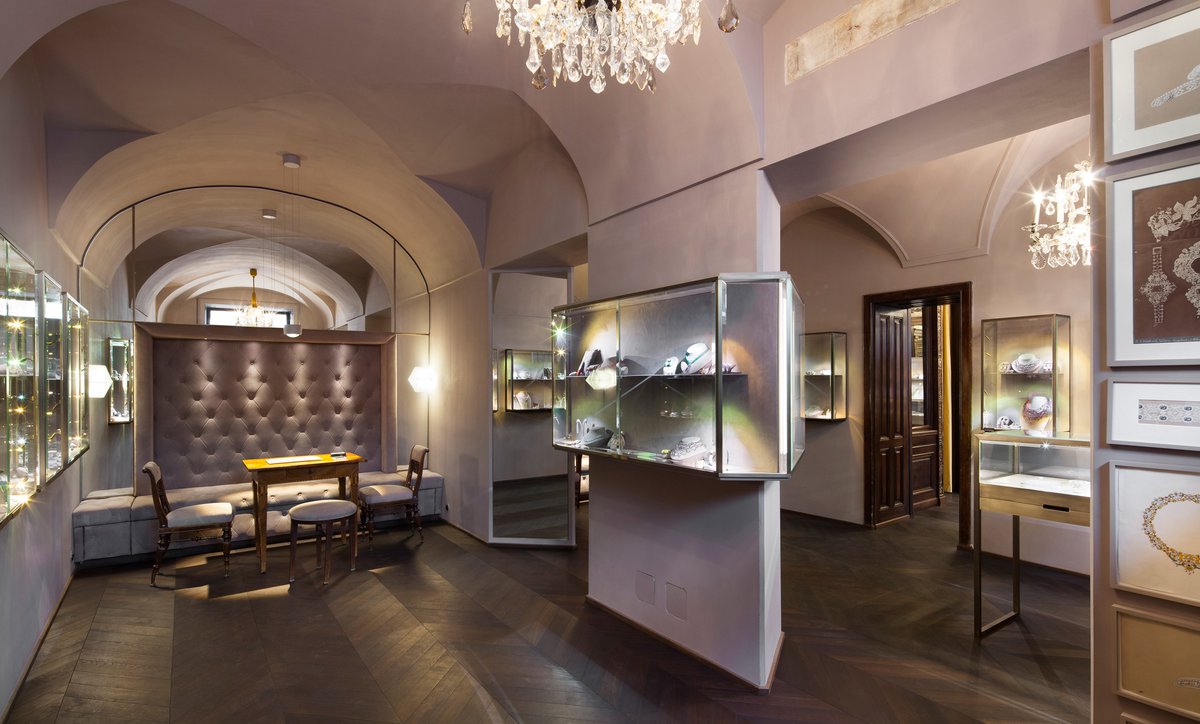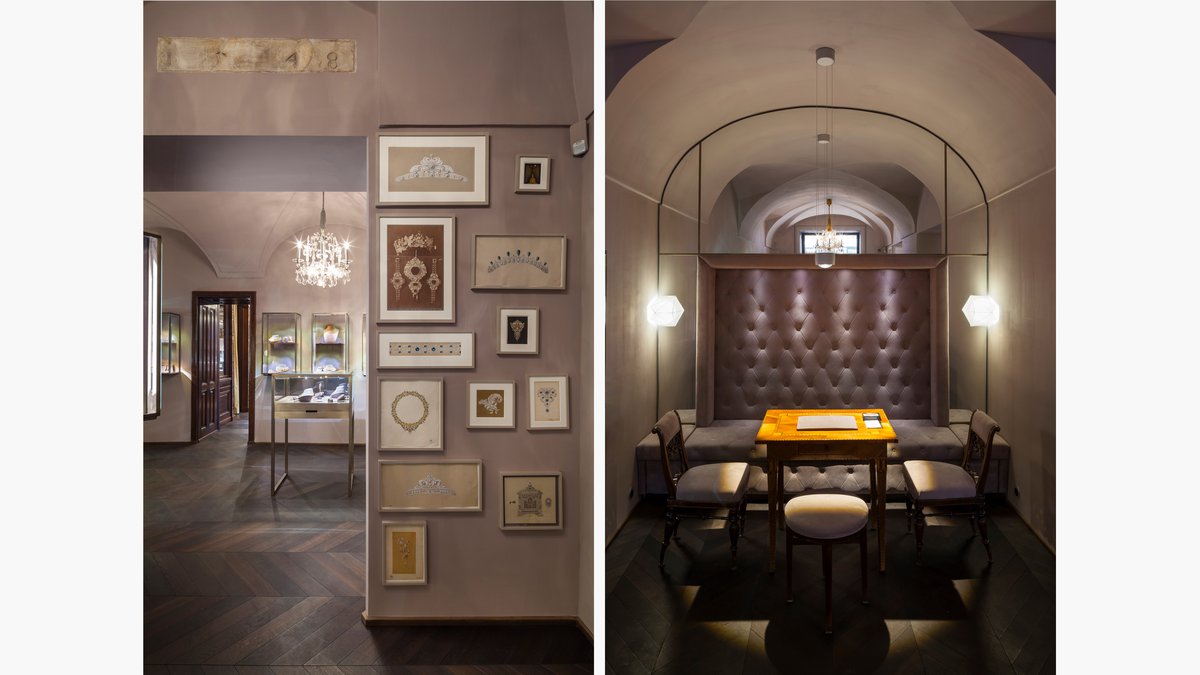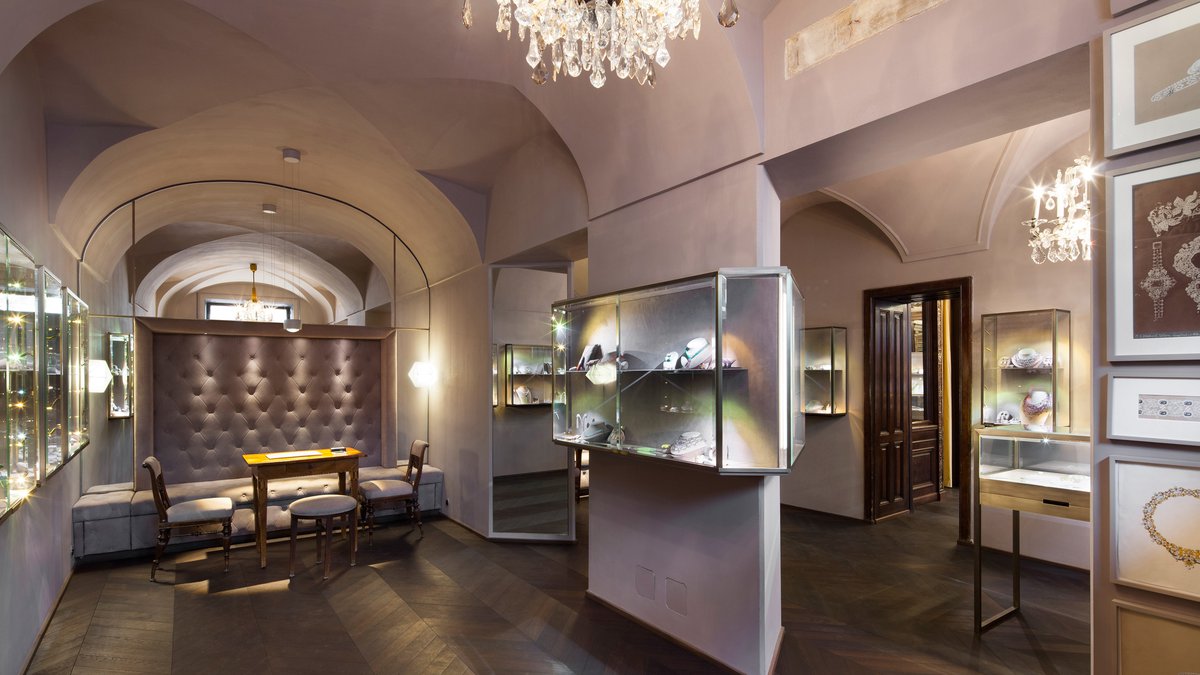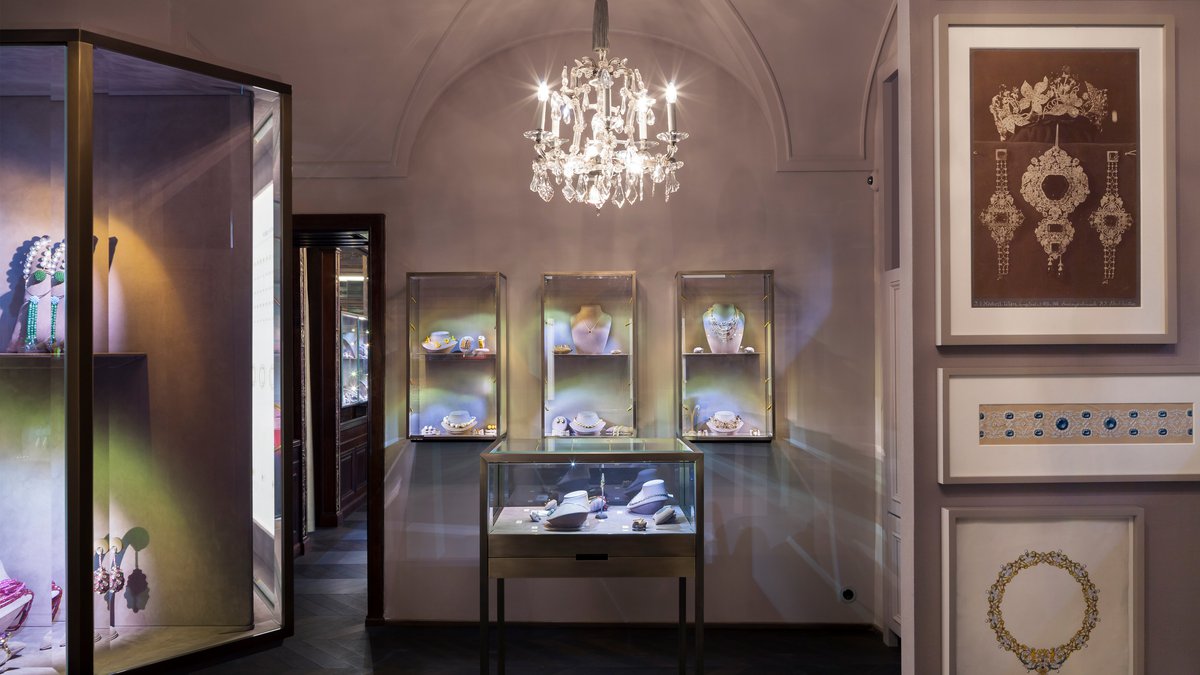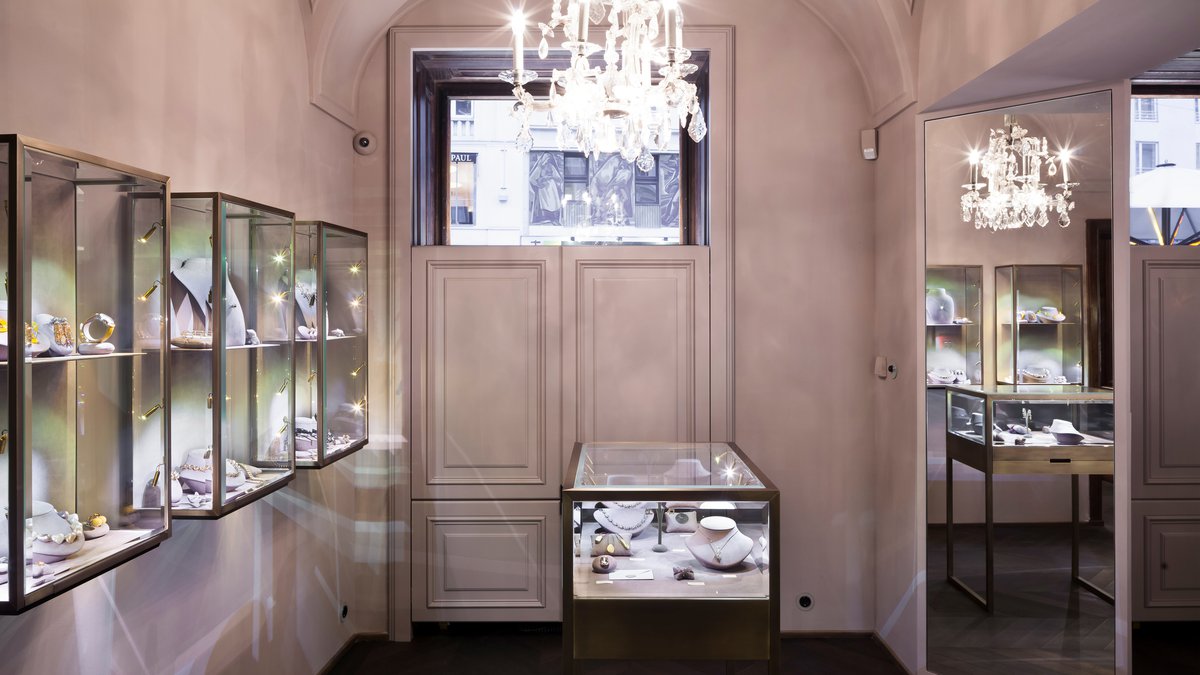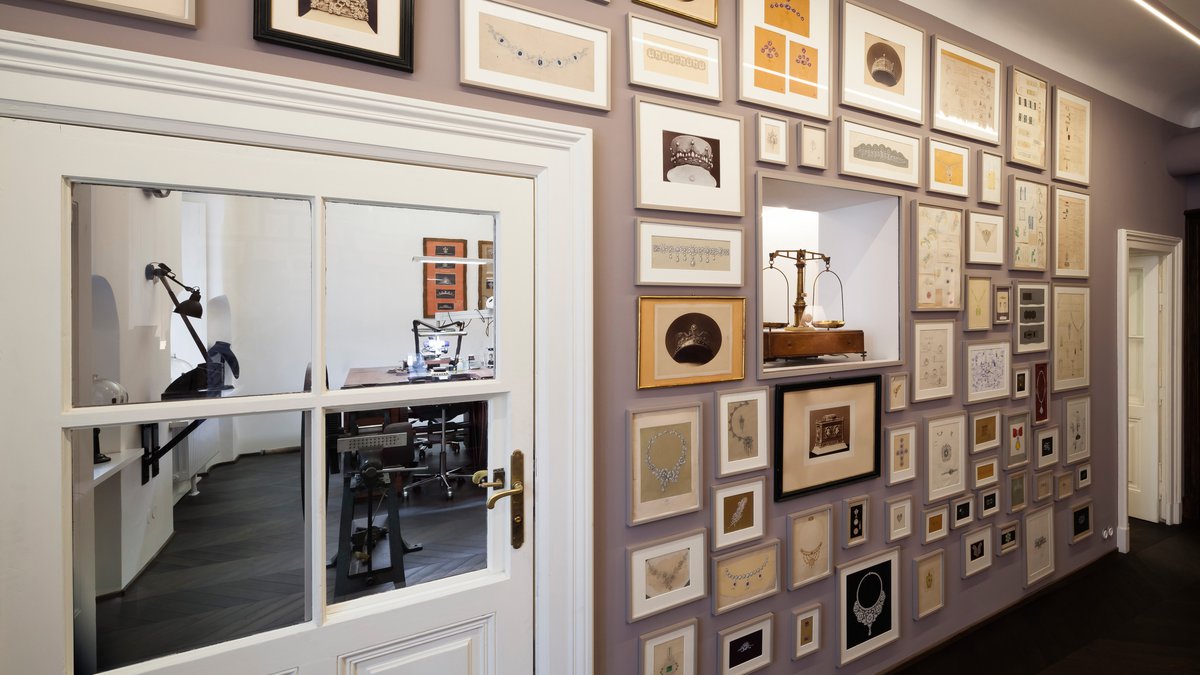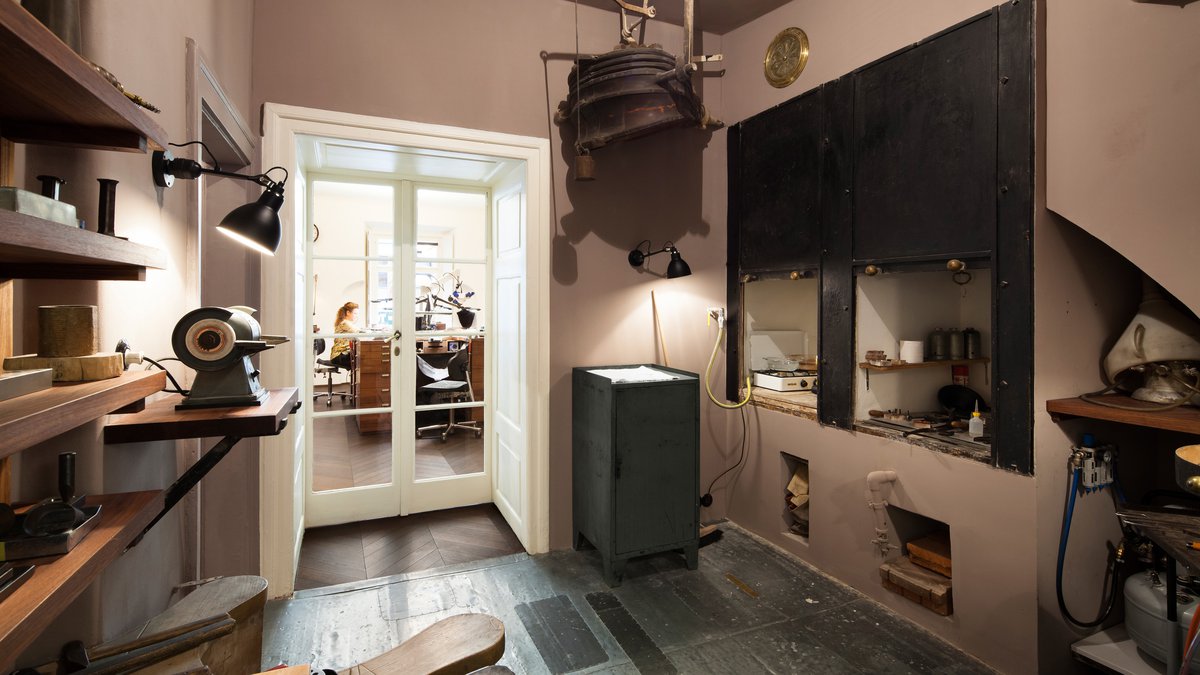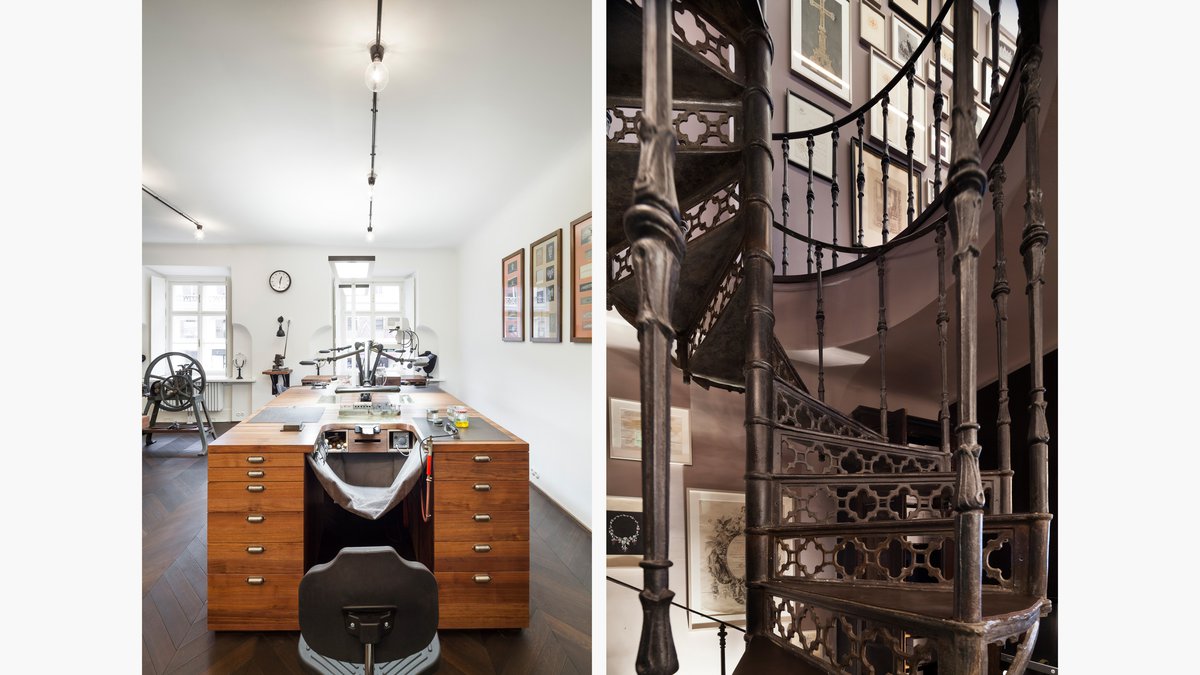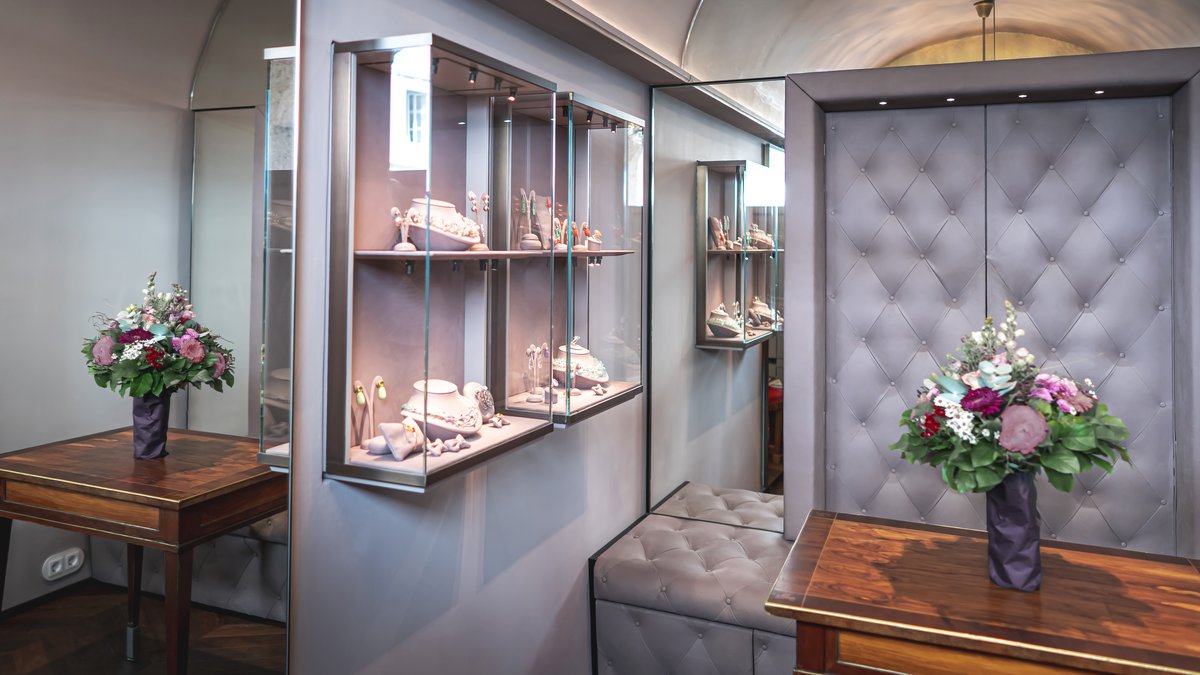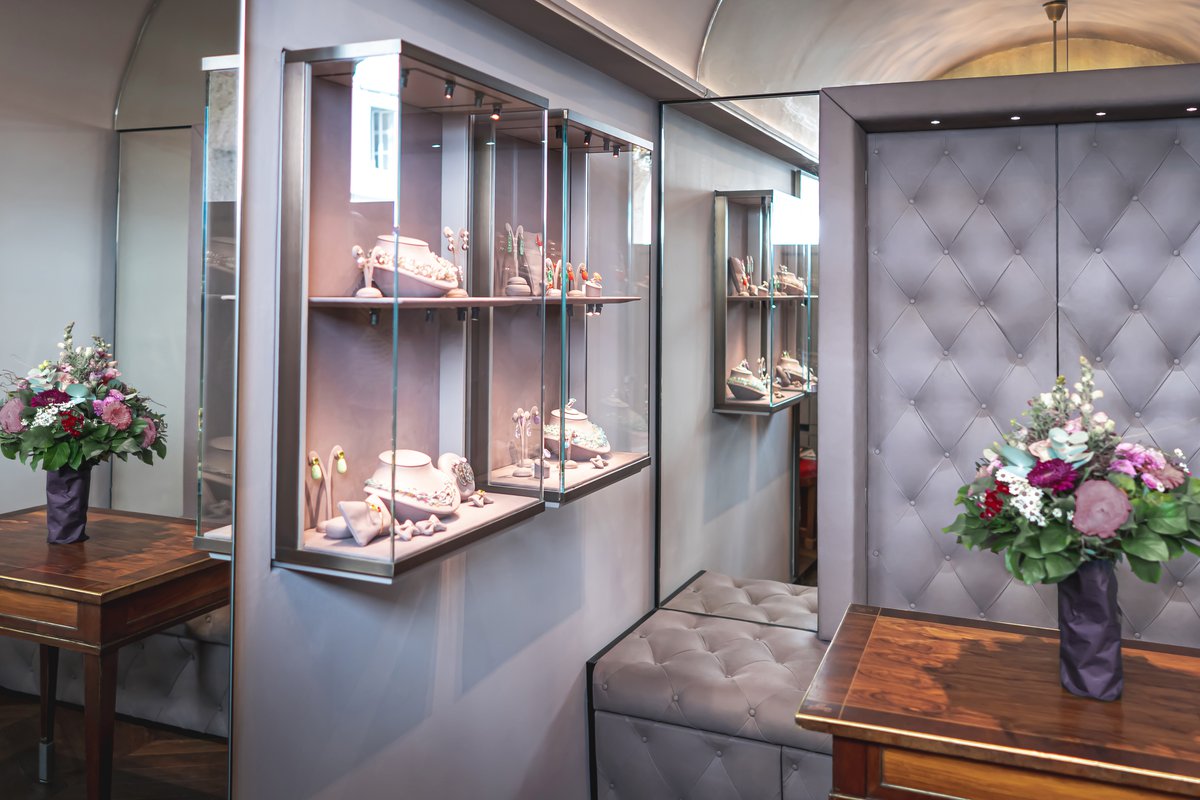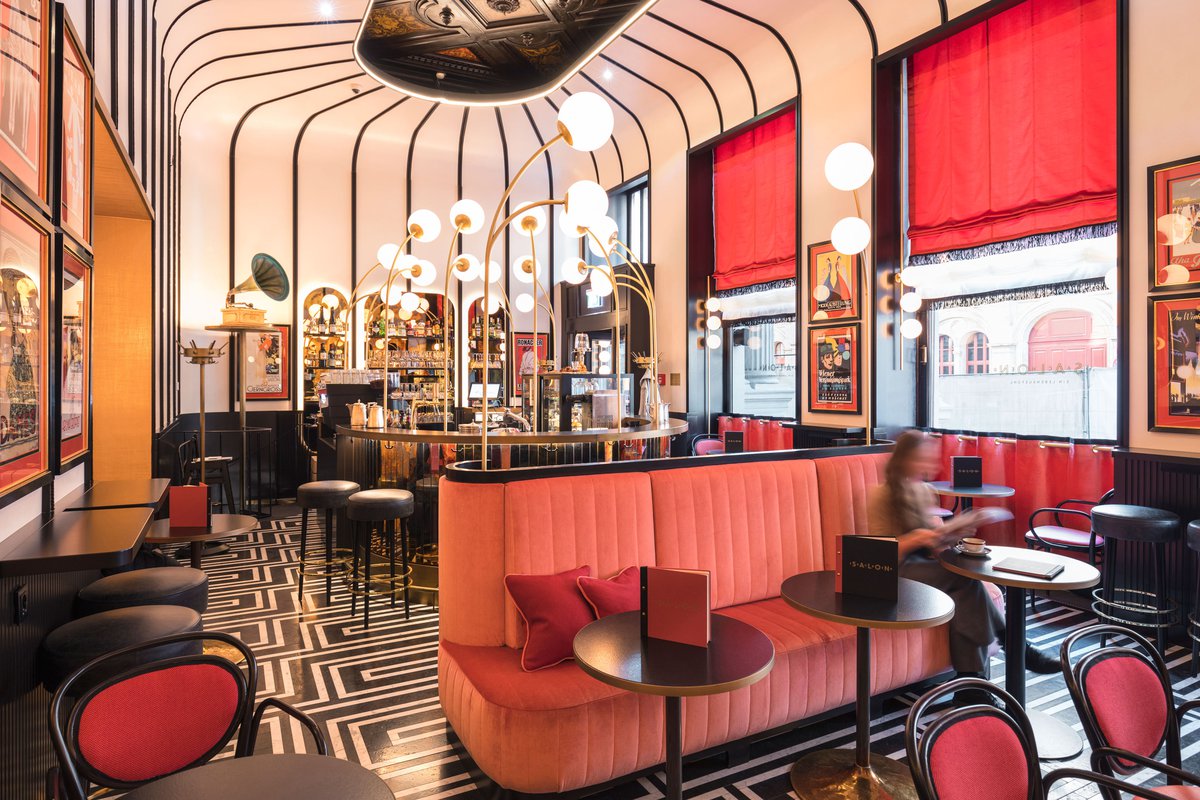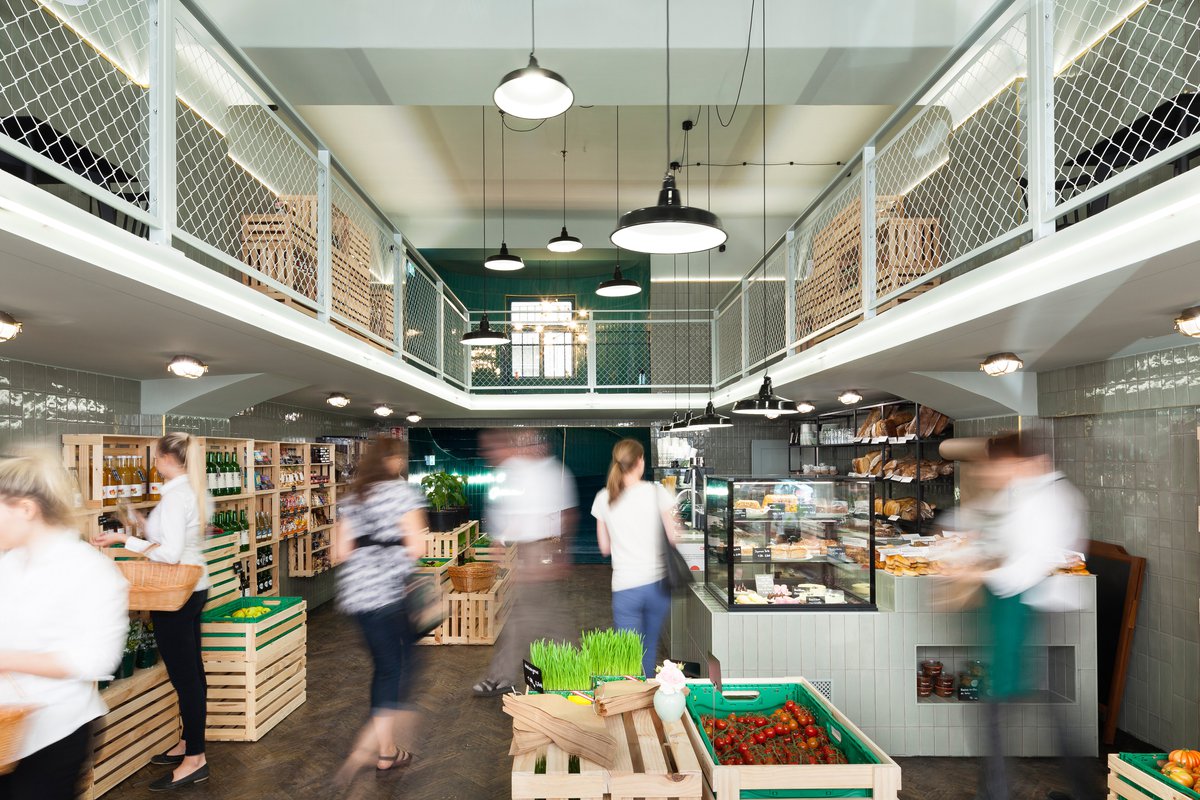A.E. Köchert Jewellery Shop
The jewellery box principle.
BWM restored the historical salon of Theophil Hansen down to the smallest detail and adapted it for contemporary functions.
Where once the jewellery for Empress Sisi was designed, BWM Architekten took inspiration from a jewellery box and merged the existing historical structures with new interior elements to form an architectural unit.
A true architectural gem
The Viennese jeweller A.E. Köchert is a family-owned company steeped in tradition. For 200 years it has been creating elegant jewellery of the highest quality. The Köchert jewellers delivered jewellery to the Viennese royal court and were the personal imperial jewellers of Emperor Franz Joseph. Empress Sisi caused a stir with her jewellery, and her star-shaped hair ornaments started a trend across Europe. In 1880 the company was already run by the third generation and some 50 goldsmiths were creating exclusive tiaras and diadems. By this time, the name of Köchert was mentioned in the same breath with such famous European jewellers as Cartier, Mellerio and Bucheron.
Since the very beginning, Köchert has been producing its precious pieces in its own workshop. In 1873 Theophil Hansen, one of the most famous architects of Vienna’s Ringstrasse, designed the company’s new premises, which have been the home of Köchert for more than 150 years now. This shop, a unique combination of workshop, consulting space and salon, is one of the oldest shops in Vienna and an original example of Viennese architecture of the Gründerzeit period – a true architectural gem.
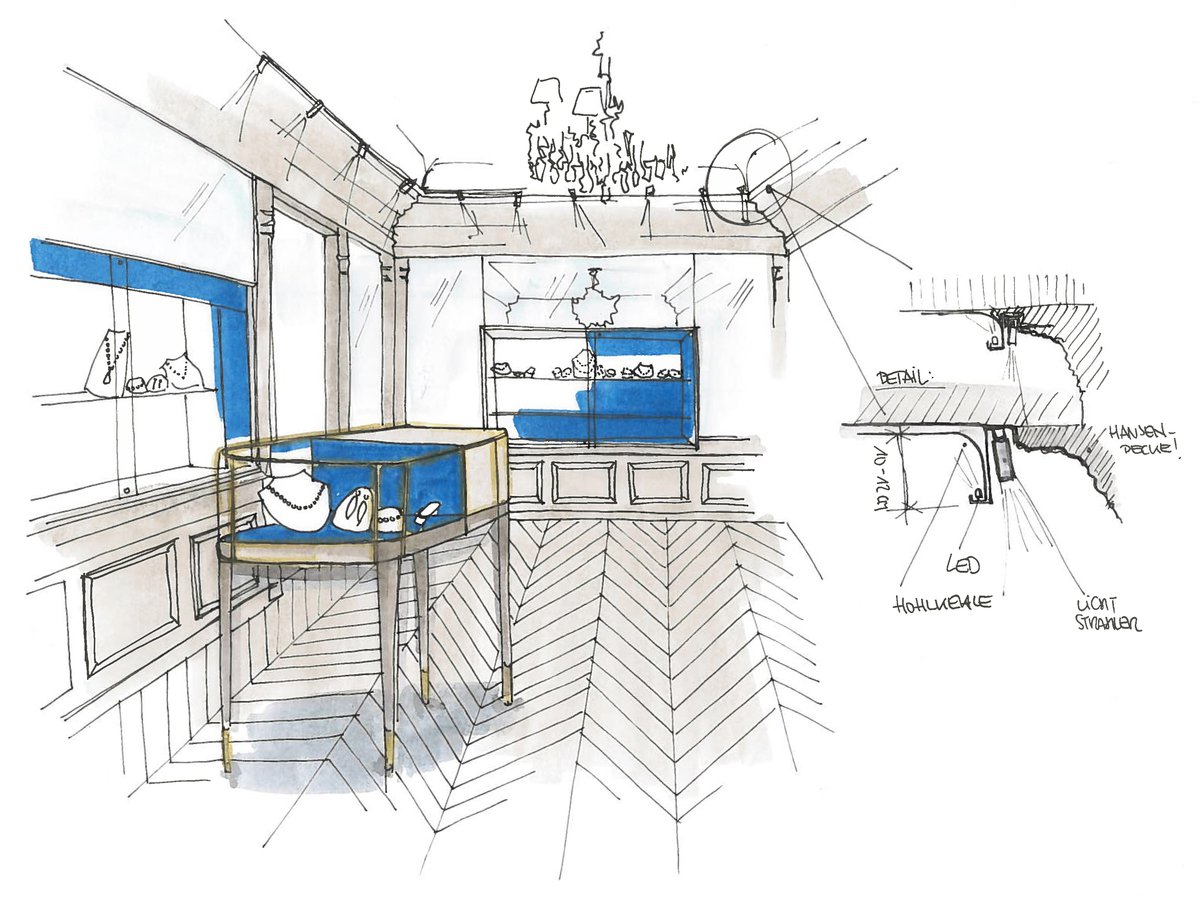
Comprehensive renovation and redesign
After several extensions and adaptations carried out in the past, the time had come for a thoughtful but comprehensive renovation and refurbishment, while preserving as much of the venerable architectural substance as possible. An extremely gentle touch was required for this challenging project. BWM Architekten, who have extensive experience in the area of renovating and converting heritage-protected buildings, were commissioned with the task. Erich Bernhard’s interior team proposed an attractive concept that perfectly highlights the shop’s character, with a new, eye-catching presentation of the jewellery and the company’s history, new areas for undisturbed consultation and space for customers to move freely. The sales and workshop areas were adapted for new functions, while at the same time underlining the special atmosphere and the unique character of this classic Viennese interior.
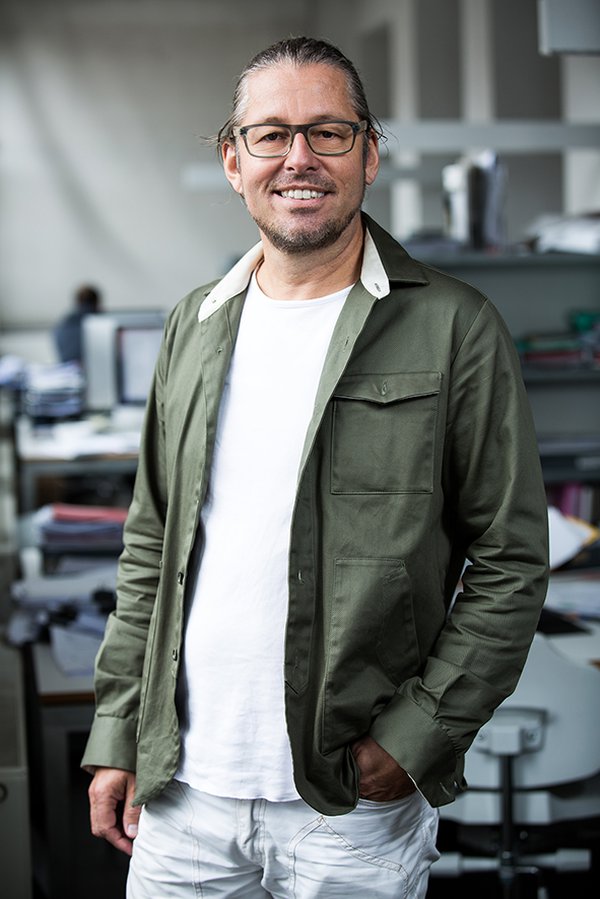
In this sensitive project, hardly anything was left untouched. But it was important to us to keep this from being too apparent and also to preserve as many traces of history as possible.Erich Bernard
Protecting cultural heritage
The renovations were carried out in close cooperation with the client and the Austrian Federal Monuments Authority. Extensive restoration-related tests were carried out on the walls, ceilings and floors throughout the renovation. One particular challenge was the comprehensive renewal and unobtrusive integration of all security and domestic service systems in the historical building.
The Salon of 1873 – a piece of Viennese history
Like the Köchert brand, the shop at Neuer Markt is a piece of Viennese history. To this day, customers enter the shop via its centrepiece, the well-preserved historical salon designed by Theophil von Hansen as a sales and consulting room in 1873.
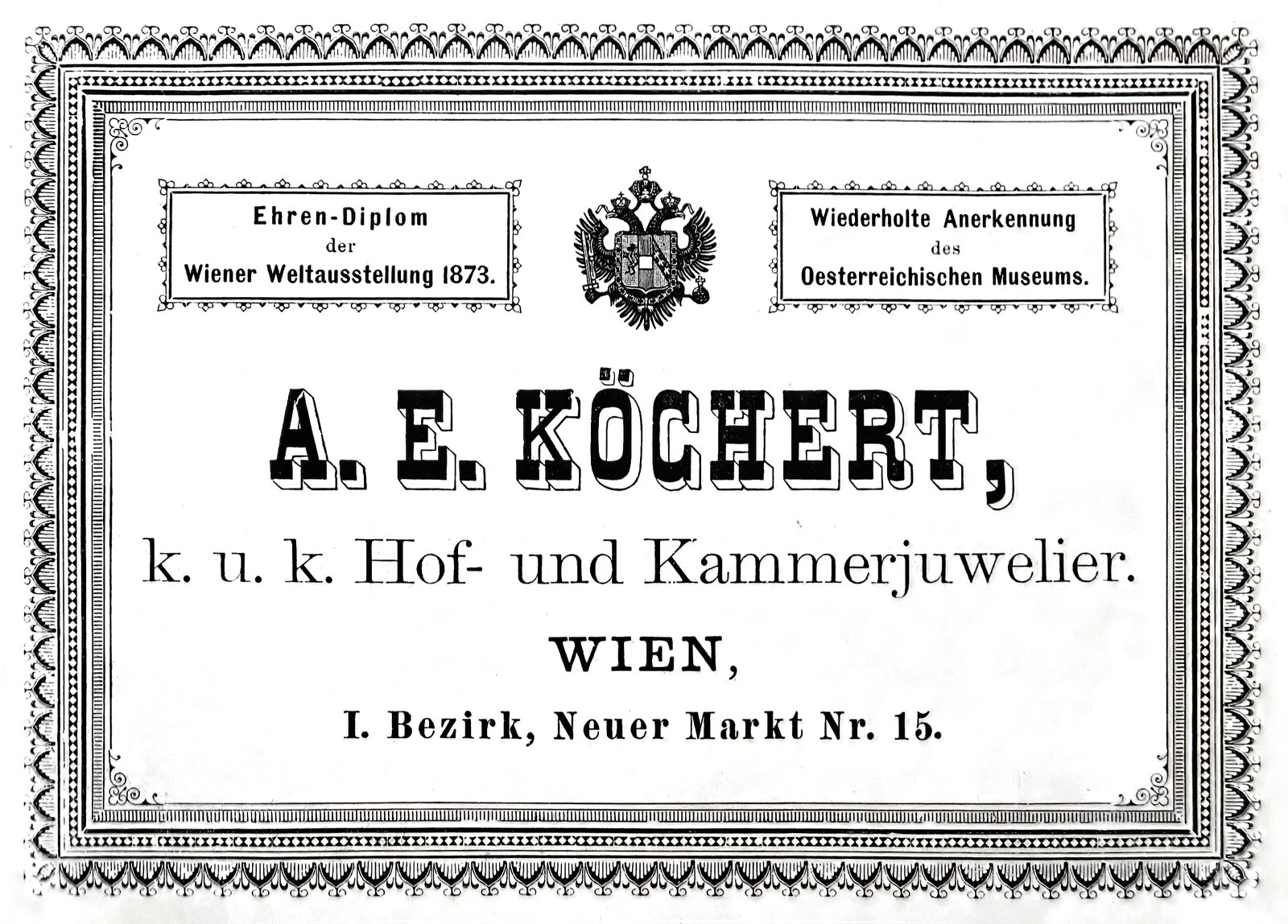
A box for the jewels
BWM’s design concept for Köchert resembles an elegant jewellery box. Subtle shades of grey unify the existing structure and all the new interior elements to form an architectural unit. They have a calming effect and allow the original historical elements and the jewellery to take centre stage. Inspired by the lining of a jewellery box, the inside of the new showcases, the sitting arrangements, the historic Hansen chairs and the back-office furniture are all covered with leather. The colour oscillates between light grey and mauve – that special colour that was first presented at the 1873 World Fair in Vienna.
The historical Hansen salon was renovated down to the last detail. The original dark wood panelling and classicistic friezes showing figures and flowers characterise the atmosphere. The only new additions are unobtrusive showcases and a delicate console display case. The new lighting on the ceiling gives the room the impression of opening up, with an eye-catching chandelier object by Megumi Ito at its centre.
Insights into history on the upper floor
The upper floor houses the historical workshop in which the exclusive jewellery is crafted to this day. Just outside the workshop is a room with the intimate atmosphere and flair of a 19th century salon, where the Köchert experts gladly give customers competent advice. Valuable original sketches of jewellery designs adorn the walls in salon style. At the same time, the salon serves as a museum that documents the long tradition of the former imperial jeweller. From here, visitors can also catch glimpses of the workshop and the machines, some of which date back to the very beginnings of the company. Erich Bernard: “In this sensitive project, hardly anything was left untouched. But it was important to us to keep this from being too apparent and also to preserve as many traces of history as possible.”

Task
Refurbishment of the long-established Viennese jeweller A.E. Köchert,
Status
Completion
09/2015
Client
A.E. Köchert Juweliere GmbH
BWM Team
Erich Bernard, Birgit Eschenlor, Katrin Maria Stefanzl
Image credit
BWM Architekten / Christoph Panzer
Participants
Conception & planning
BWM Architekten und Partner ZT GmbH
Construction management
Oliver Eichhorn und Markus Bubel - Bubeleichhorn
Light design
Megumi Ito
Showcase lighting
Prof. Günther Leising
Light system
XAL GmbH - xenon architectural lighting
Decoration Atelier Foggensteiner
